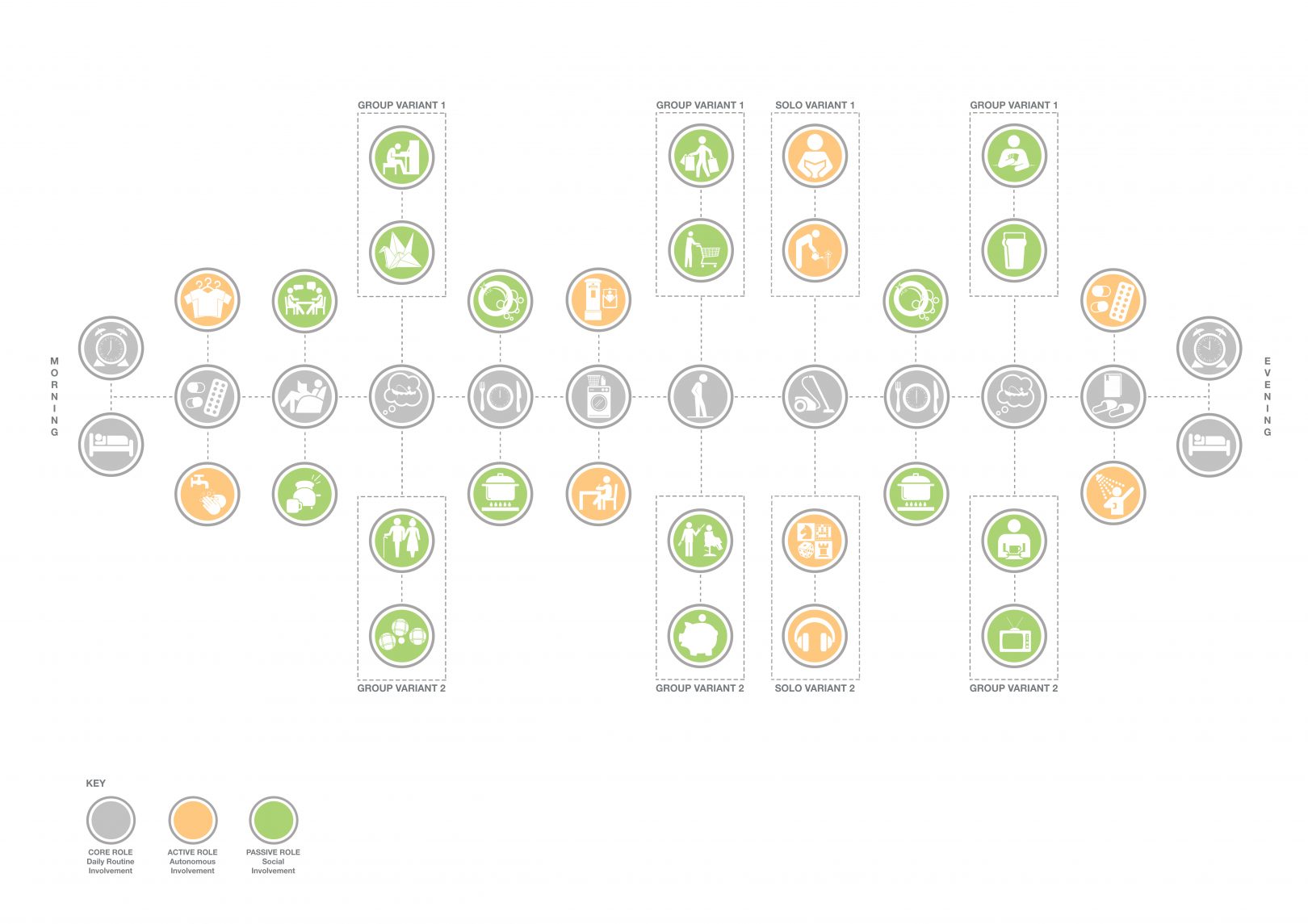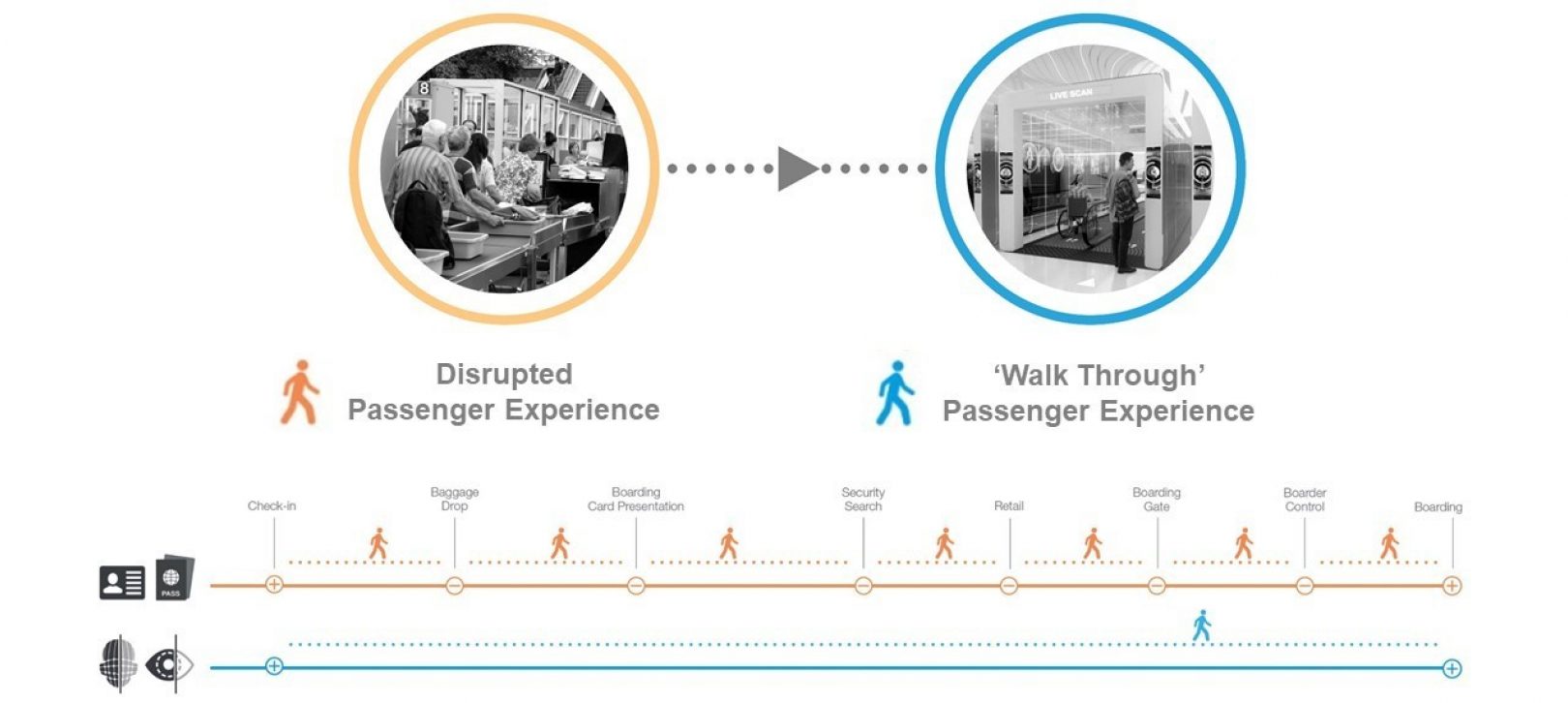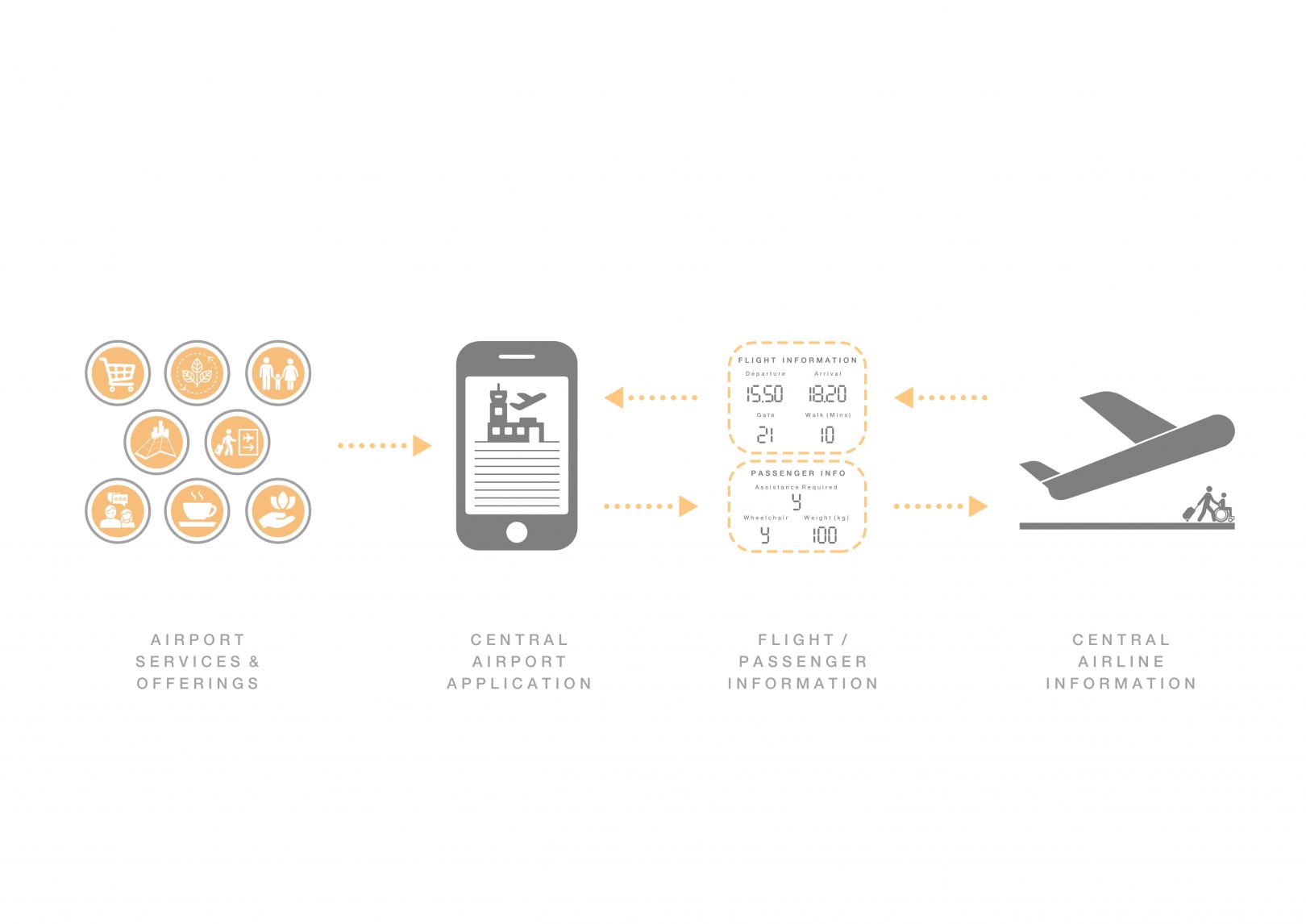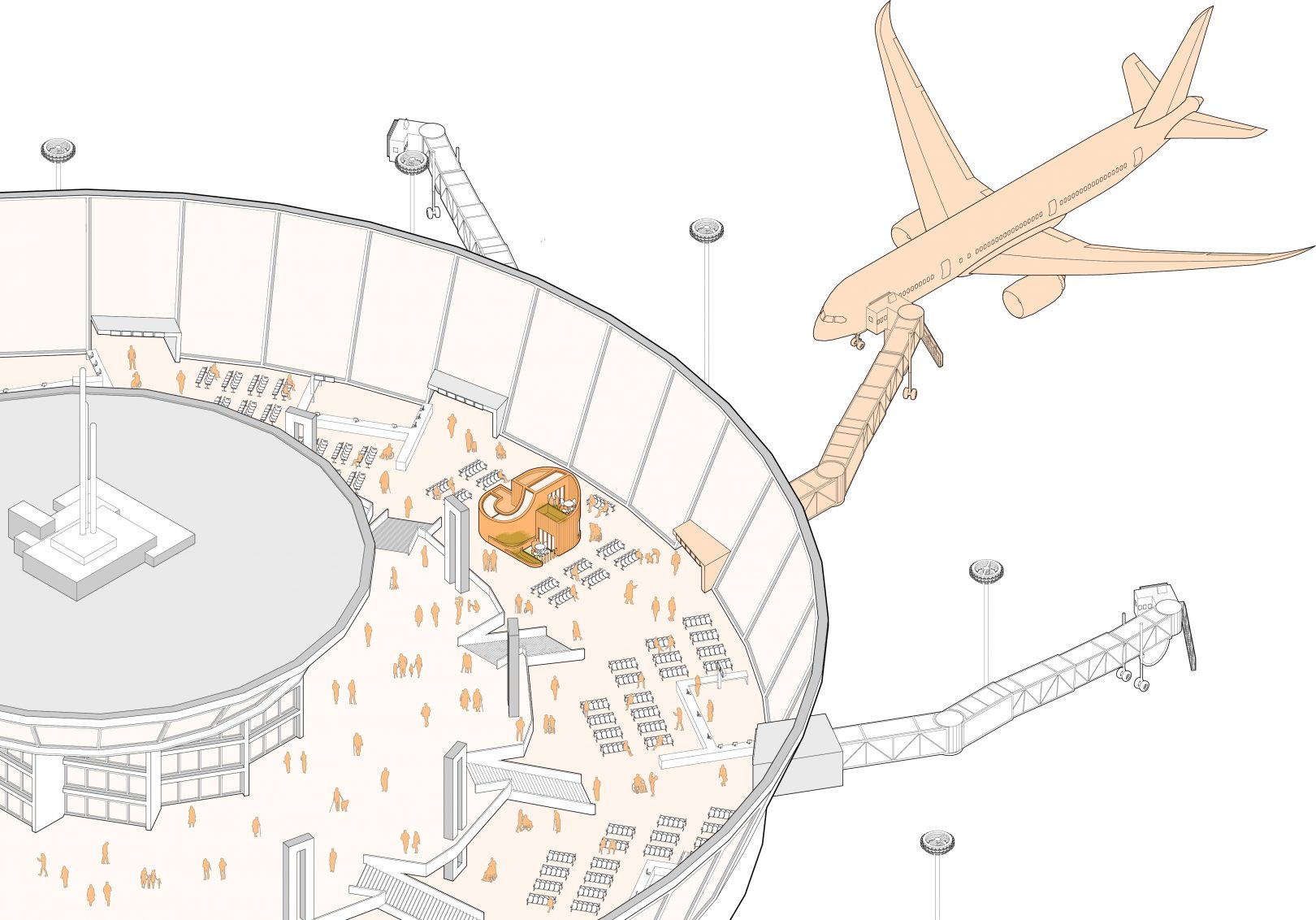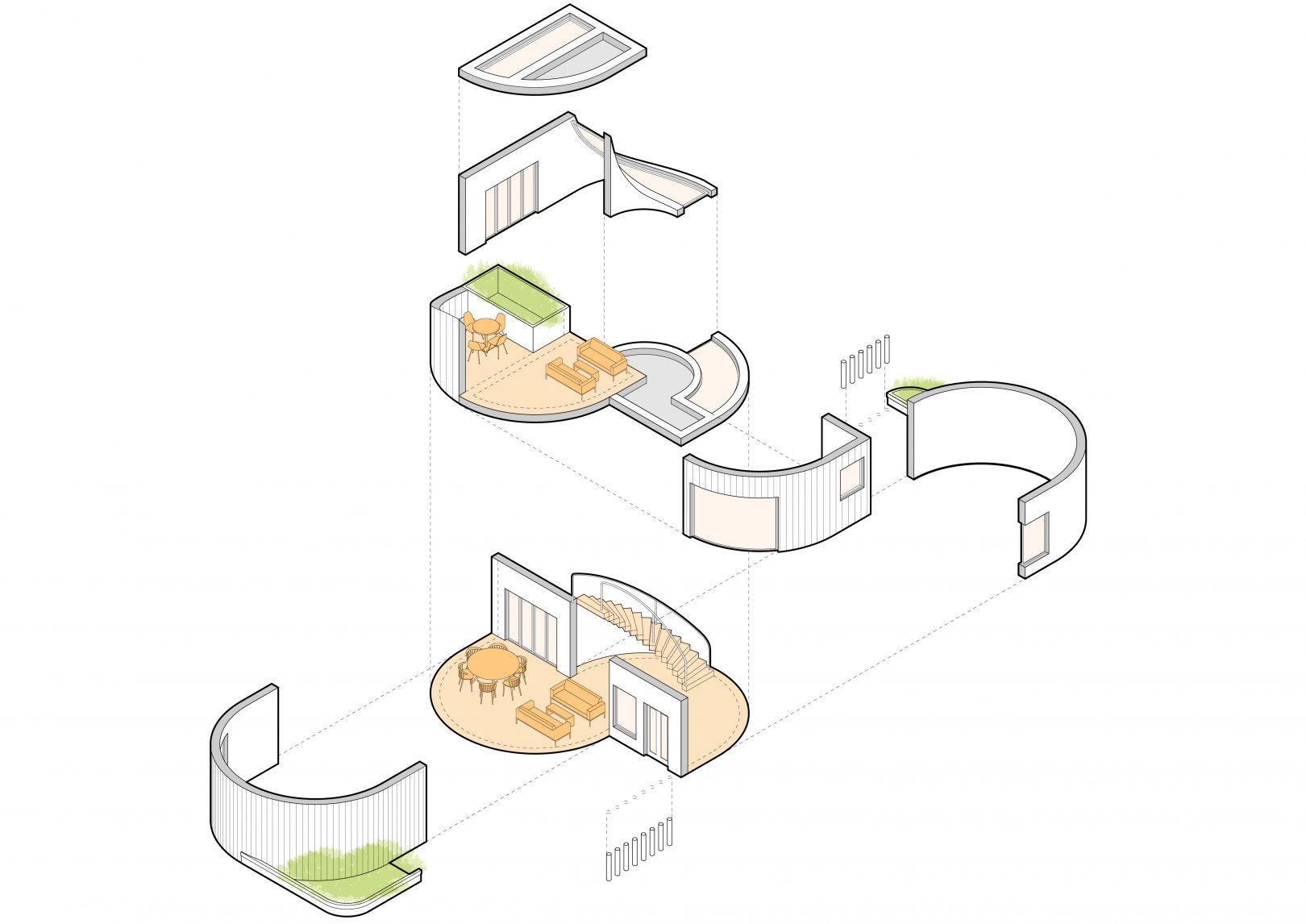Currently the airport experience from check-in to boarding is disruptive, a series of necessary security checks that heighten stress triggers. By enabling customer focused virtual reality or 3D mapping of airports, passengers are able to have an immersive experience in advance, removing the insecurities of entering the unknown. Visitors are able to familiarise themselves with the check-in route, security processing and commercial offerings in advance, ultimately enabling a freedom to explore in a supportive environment; all this while respecting boundaries and limiting access to certain security protocols.
When cognitive ability declines, the built environment assumes even greater importance, becoming either a hindrance or an aid to retaining who we are. Having a central point of contact booked in advance at accessible meeting points, creates that crucial passenger interface. Successful precedents such as the Sunflower Lanyard, have demonstrated how a discrete solution has given visibility to passengers with hidden disabilities and allowing staff to locate them for additional support.
By providing trained staff who are aware that new environments can be disruptive to a person living with dementia, recognises the challenges the passenger faces and gives confidence to the passenger. The sensitive integration of additional data fields in the booking process would provide more detailed customer information to airport personnel on scanning the boarding pass enhancing fast track security routes. Similarly, positive shifts towards biometric technologies allow a walk-through passenger experience which will reduce anxiety at key decision points in the process.
Wayfinding is the manifestation of our navigation skills, our ability to orientate ourselves in the physical world and reach our destination through independent means. Upon its removal through dementia, it accentuates the decline of our self-worth and crucially our identity, which structures our perceptions of place.
People living with dementia have trouble with their visuospatial capabilities, their ability to perceive distances and objects in the third dimension. The syndrome therefore requires an enabling environment, one which can support the person. Duty Free shopping, as an example, is designed to disorientate the observer and encourage interaction with the retail offerings.
The misalignment of spaces impacts wayfinding performance, and the speed and accuracy of locating oneself within the terminal building layout is lost to spatial confusion. The ability of the human mind, to look at ways to rationalise the situation is severely impacted and instigates anxiety for a passenger with dementia.
It is of paramount importance to circumnavigate these spaces to a place of refuge. The introduction of augmented reality applications can help avoid this, and can be used to direct the passenger visually in real time and/or audibly with a dedicated help assistant. This enables the route to be predetermined ahead of a passenger’s visit or facilitate flexible assistance on the day.
Airports can be the enablers, creating a new typology of sensory rooms in transport infrastructure. A flexible module solution is required, that encourages widespread application and is responsive to space being at a premium. Construction techniques such as prefabrication with embedded services, can be utilised to positive effect in these space. These techniques are designed to reduce the construction programme, achieve a higher level of quality tolerances, reduce material wastage and minimise concourse disruption within an operational airport terminal. The location in the airport is key, maximising inclusivity in the changing places so as to not isolate an important, growing demographic in society.
A relaxed environment should be created without stigma, negative signage or connotations and with broad appeal. Key is exploring how to remove people from an overly stimulating environment by creating enclosed respite spaces within the open planned spaces such as the departures lounge. The space can be pre-booked in advance to ensure the level of service and sensory stimulation is maintained at the correct level conducive for passenger respite ahead of their travel.
A person living with dementia achieves their desired sense of emotional security through the use of pre-existing knowledge, stimulated through memory cues. This allows the individual to be settled but also thrive, confident in their surroundings and interaction with others.
The domestic scale openings marking the thresholds into the space can provide a recollected comfort context within the terminal building scale. It is important for these spaces to provide exterior as well as interior views. Panic can be prevented by creating vistas to the sky or airfield, acknowledging the clinical proven benefits to wellbeing of a connection to nature and the outdoors. Daylight can also be utilised as a wayfinding device to orientate the passenger within the space itself.
Once inside an organic, flowing form reduces the number of decision points and is designed to encourage wondering while ensuring legibility does not transcend the values of discovery. Zonal areas create environs for a person to thrive through social networks created through both communal activity areas and private reflection areas for personal, and cultural activities, all of which are overseen by support staff. Using moveable partitions where possible give the user control of extending or privatising these zones. External terrace areas at each level provide connections to the soundscapes of the concourse.
By creating dedicated sensory zonal areas to reboot or reset, users are surrounded by comforts that require the understanding of sensory stimulation. This is achieved by ensuring an executive feel through materiality, encouraging haptic memories (touch) whilst creating a customisable environment for echoic (soundscapes) and iconic (visual projections) memories. Integrating suitable seating space for aides and pager allocation services for individual travellers to provide confidence that they will not miss their flights. Airports can also ensure an equitable passenger experience by providing food and beverages facilities, prepaid to avoid the stress of transaction.
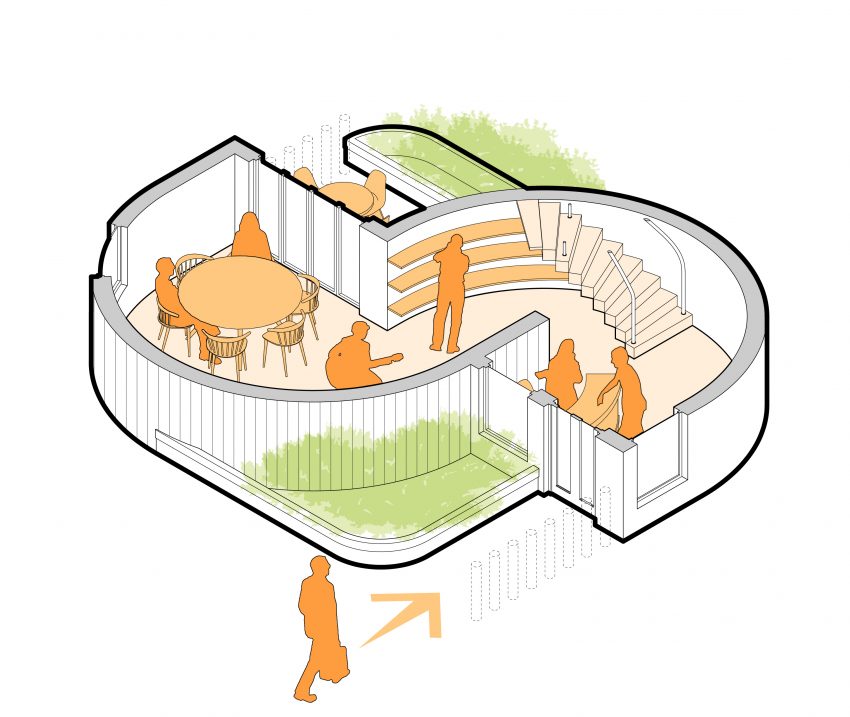
It is important to recognise how these provisions can give airports a unique selling point, resulting in enhanced customer demand and economic benefits from the ‘purple pound.’ Airports can provide the enabling and supportive environment, that gives piece of mind to family and friends who would otherwise be concerned for the welfare of the passenger involved. As travelling should not be exclusive and should remain an opportunity for all, connecting people to both new and familiar experiences.
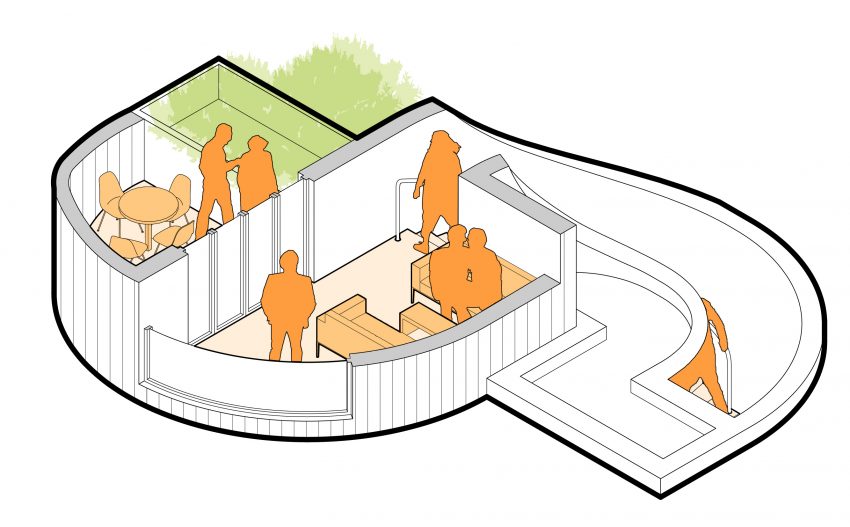
Originally published in International Airport Review in June 2020
